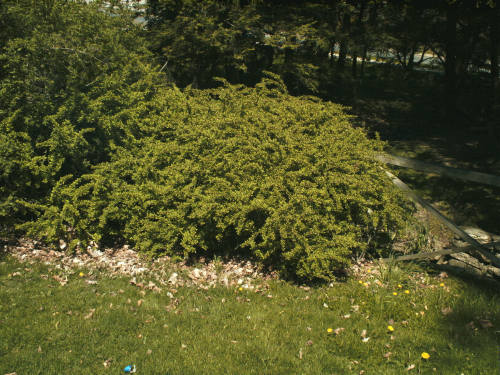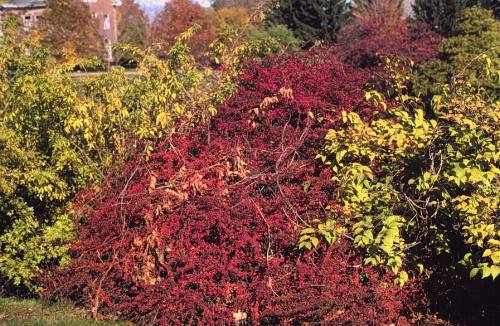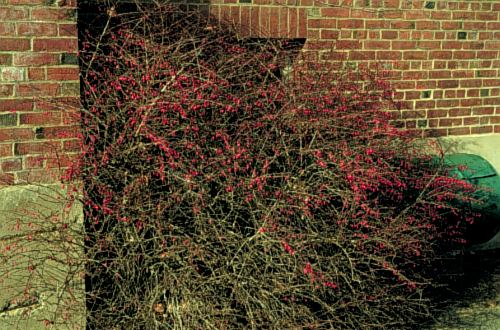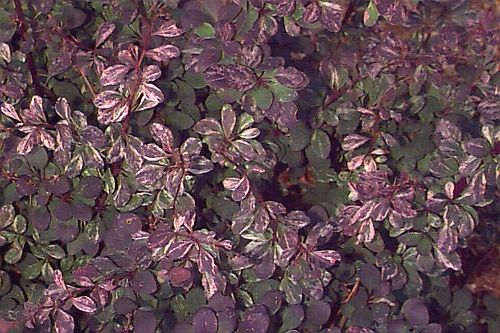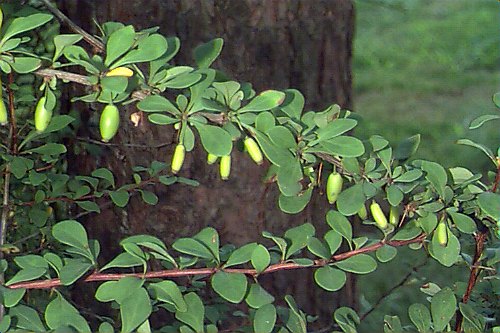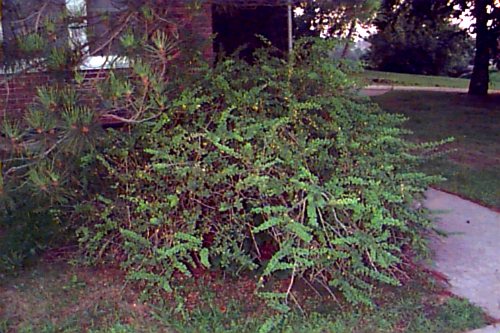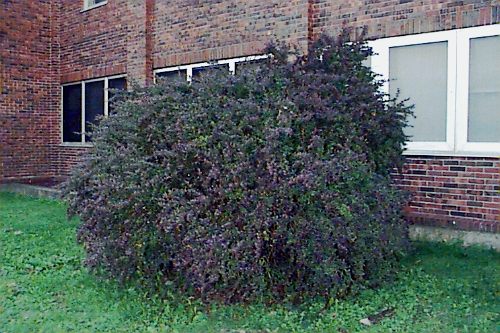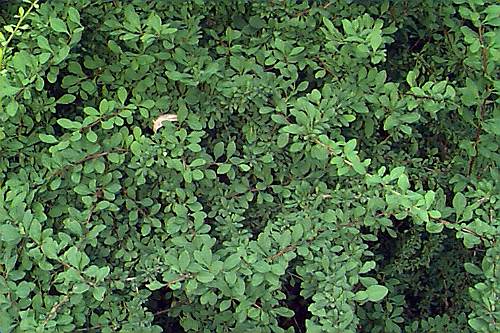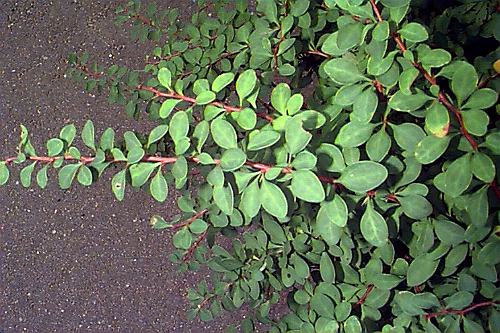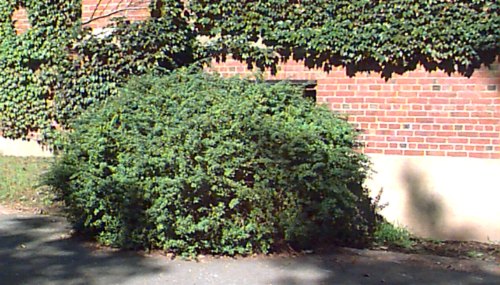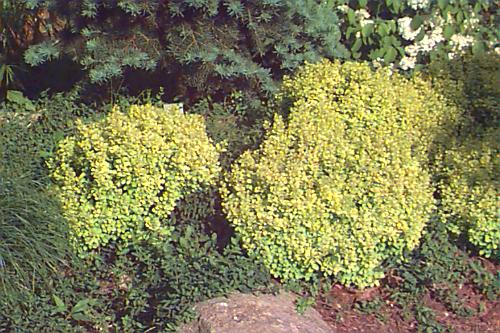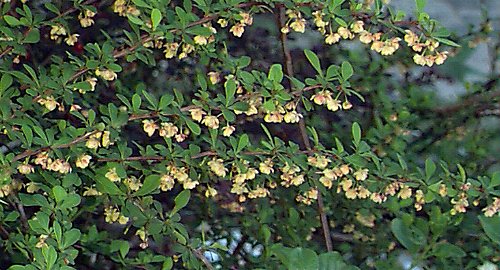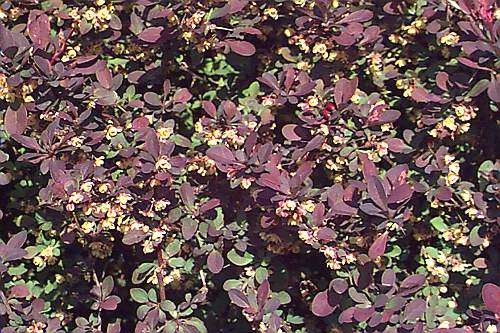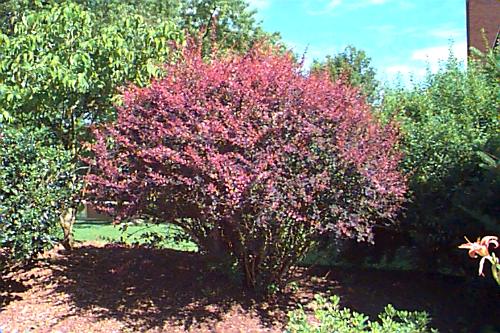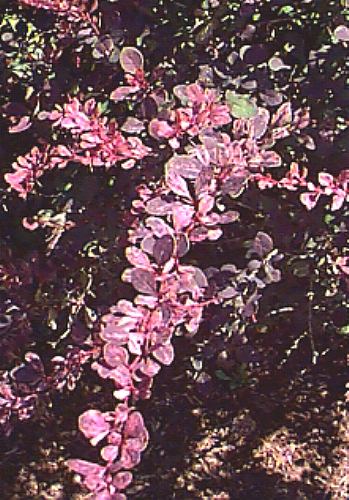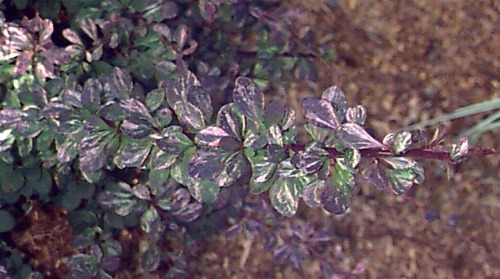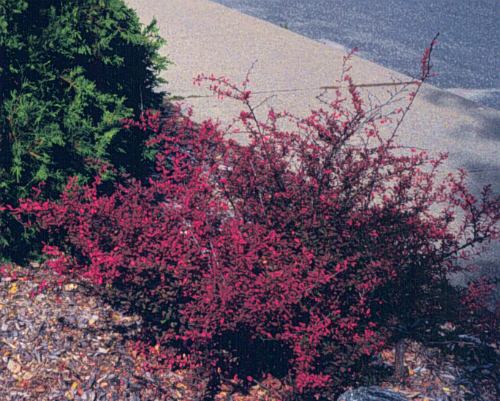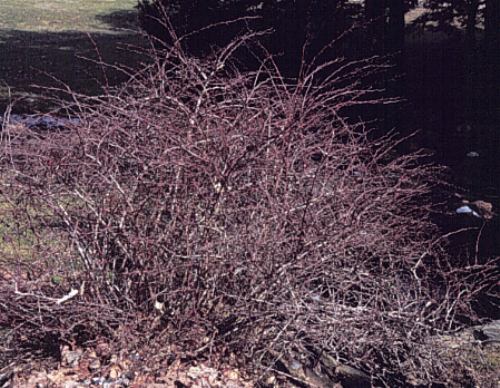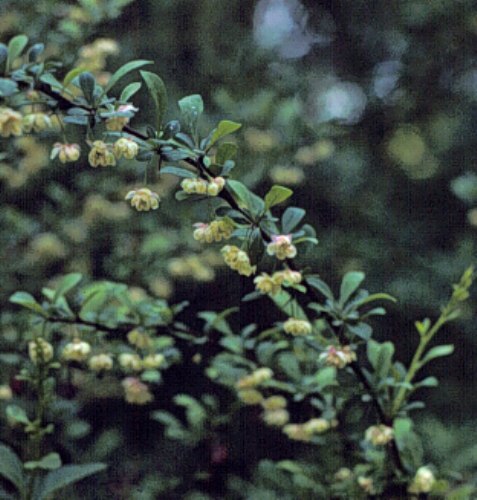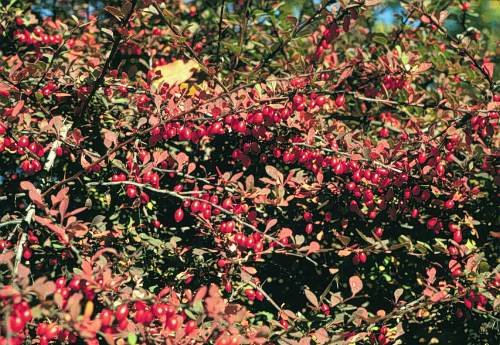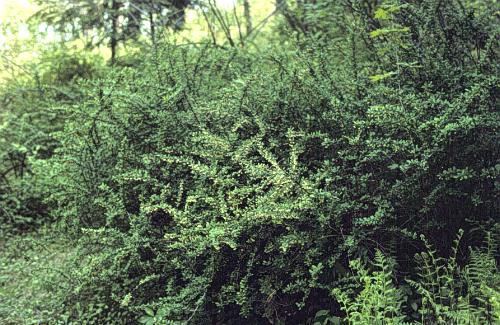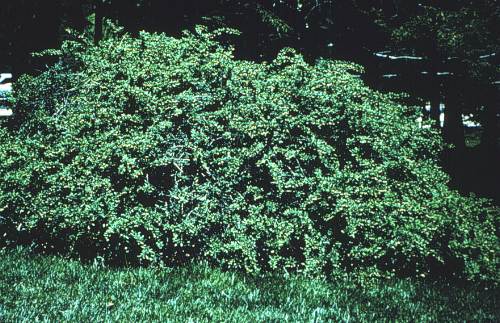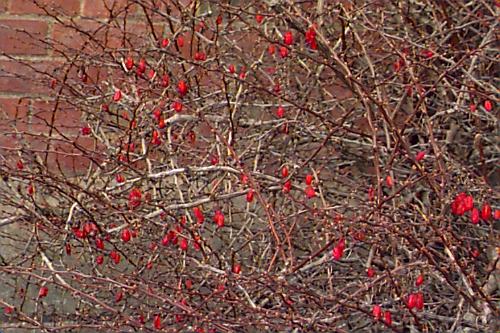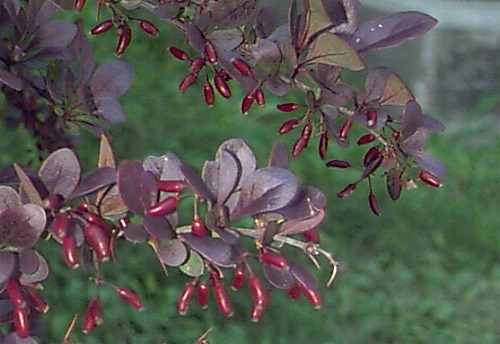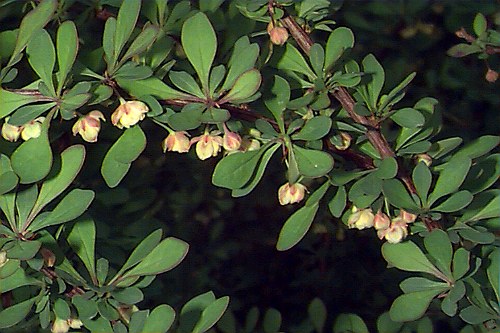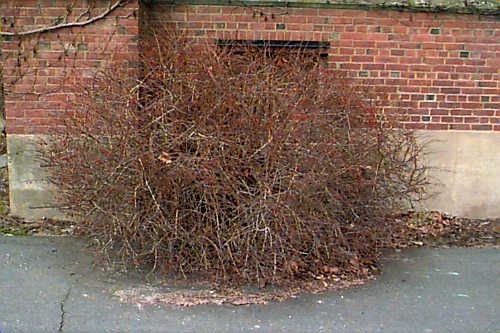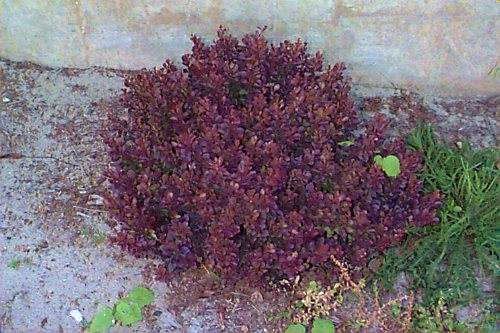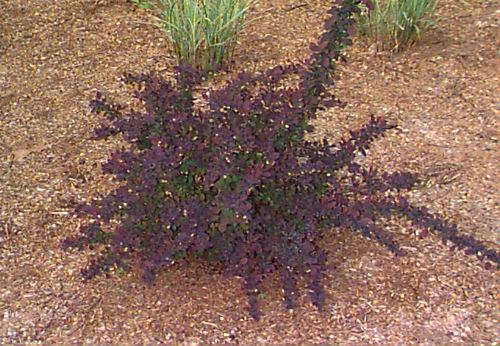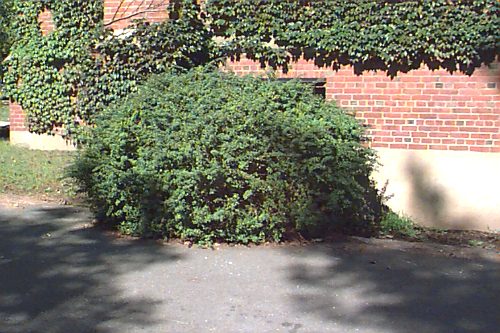Berberis thunbergii
Japanese Barberry
Berberidaceae
ExpandHabitat
- native to Japan
- hardy to zone 4
- Special Note: This species has demonstrated an invasive tendency in Connecticut, meaning it may escape from cultivation and naturalize in minimally managed areas. For more information, .
Habit and Form
- a deciduous shrub
- 3' to 6' tall
- slightly wider than tall
- very twiggy, with over-arching branch tips
Summer Foliage
- alternate, deciduous leaves
- ovate shape; significantly wider at the tip than at the base
- 0.5" to 1.25" long, 0.25" to 0.5" wide
- stem has a zig-zag growth pattern
- fine texture
- bright green color
- early to leaf out in spring
Autumn Foliage
- deciduous, with orange, red and purplish fall color
Flowers
- small yellow flowers in April
- numerous and interesting, but only slightly showy
Fruit
- bright red berries
- color up in October
- typically numerous and reasonable showy
- fruits last for a while into winter
Bark
- stems are fine so bark is not of importance
- single, 0.5" long spines at nodes
Culture
- easily transplanted
- exceptionally tolerant and adaptable
- best in full sun, but tolerant of partial shade
- withstands drought and heat well
- urban tolerant
- dislikes continually wet soils
- tolerant of pruning
Landscape Use
- borders and hedges
- groupings and mass plantings
- in urban areas
- difficult sites
- yellow, red and variegated foliage forms to add color to a landscape
Liabilities
- generally trouble free
- can seed itself into the landscape or woods
- commonly used; some cultivars with colored foliage are overused
ID Features
- deciduous shrub with ovate leaves
- single spine at each node
- yellow flowers in spring
- red berries in the fall
- twiggy, dense habit
Propagation
- summer cuttings root easily, but cannot remain wet following rooting
- by seed
Cultivars/Varieties
There are numerous cultivars available on the market today. Listed below are some of the better or more common ones representing the range of forms available. Many of the newer cultivars have trademark names.
var. atropurpurea - A naturally-occuring variety that has reddish foliage that tends to fade to green during the summer. Comes true from seed with a range of intensity in the red color. Commercial red foliage cultivars are chiefly selections of this variety with exceptionally nice coloration or habit.
'Aurea' - Has striking yellow foliage. Will turn yellow-green in shade. Foliage does not burn in full sun and hot conditions. Slow-growing, eventually reaching 3' to 5' tall, with equal spread. Does not flower or fruit heavily.
'Bagatelle' - A compact form that is similar to 'Crimson Pygmy', except the leaves are shinier and smaller, and the plant grows more slowly. To about 12" to 16" tall. Foliage is a strong purple-red.
'Bogozam' (Bananza Gold™) - A dwarf, golden pygmy barberry with a dense mounding habit. Grows 1.5' to 2' tall and 2' to 2.5' wide. Bright gold foliage does not scald in sun.
'Crimson Pygmy' - A slow-growing, red leaf form with a mounding, dense habit. One of the older dwarf, red foliage cultivars. Red color is best in full sun. 1' to 2' tall and 2' to 3' wide under most circumstances, but can be larger. Probably the best known barberry cultivar.
'Kobold' - A compact form to 2' to 2.5' tall, with a mounded habit. Foliage matures to a dark , shiny green. Little flower or fruit display.
'Helmond Pillar' - A striking, unique form just now receiving attention in the trade. A strictly upright, fastigiate form growing to 8' tall but only 1'-2' wide. Forms a slow-growing column of red leaves.
'Rose Glow' (also labeled as 'Rosy Glow' and 'Rosey Glow') - A vigorous grower with red and cream variegated foliage. The mixing in of cream on the foliage is most pronounced on vigorously growing shoots, as older growth seems to fade to solid red. Best color development is achieved in full sun. Introduced from Denmark and very common on the market.
'Sparkle' - An improved green barberry with a compact habit, 3' to 4' tall and slightly wider. Foliage is dark green, leathery and heavy in substance. Fall color is fluorescent orange-red. Produces copious flowers and fruit.
'Thornless' (may also be called 'Inermis') - Notable for the stems, which are essentially thornless. The habit is also more rounded and compact, to 5' tall and wide. Fall color is orange/red.
'Variegata' - Leaves are mostly green with streaks and splotches of white.
